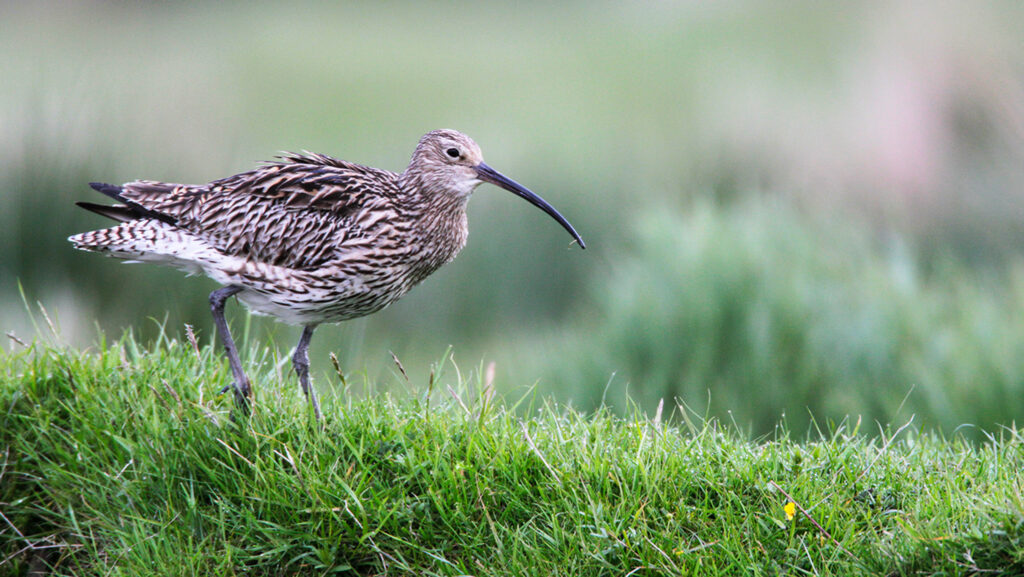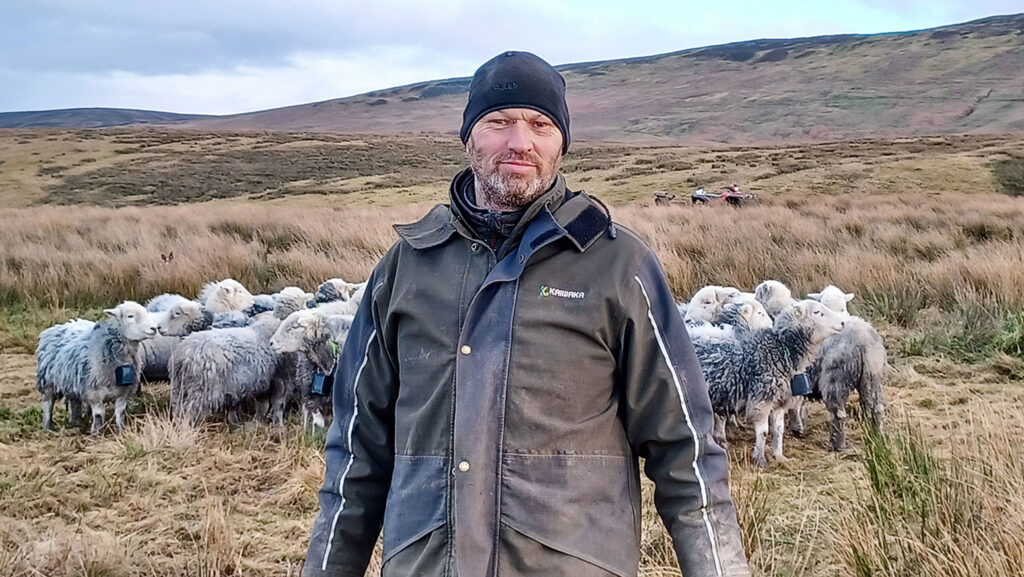RSPB trials ‘no fence’ grazing to benefit ground-nesting birds
 Curlew © Andy Hay
Curlew © Andy Hay A new project is being trialled at RSPB Geltsdale, in Cumbria, using a flock of Herdwick sheep and “Nofence” collars to restore ground-nesting bird populations.
The flock of 22 sheep have been fitted with the collars, and have been grazing a 10.5ha site since February.
The sheep are kept to a specific area using “invisible” fences, where they have learned to graze in the parts that birds like to nest, creating the perfect nesting conditions once the sheep have left the area.
See also: How arable farms can support farmland bird populations
This conservation grazing method could help reverse the decline in some of Britain’s most threatened ground-nesting birds, including lapwing, curlew and skylark – species that have already been sighted nesting at the site, with chicks expected to hatch in the coming weeks.
Ian Bell, who owns the sheep, has been tenant farmer at Tarnhouse Farm, at RSPB Geltsdale, since 2016. He and his partner manage a total of 2,830ha across two farms.
Mr Bell said: “I must admit I was sceptical at first as to how our sheep would respond. But this new Nofence technology is a game-changer.
“Herdwicks are notorious escape artists and certain individuals have a complete disregard for field boundaries, however, we have managed to train the sheep to go exactly where we want them to. The technology appears to be better than a stone wall.”
The collars work by administering an initial electric pulse, which is replaced by an audio warning.
The sheep have learned to listen to the audio sounds delivered by their collars, which divert them to areas to graze.
So far, the project, which is now mid-trial, seems to have been a success, and early signs are that the sheep grazing method will deliver positive results.

Ian Bell © Ian Ryding
Ian Ryding, warden at RSPB Geltsdale, said: “Curlews, lapwing, skylark and other ground-nesting birds urgently need our help.
“Already these birds are nesting, sitting on their eggs, so this is encouraging to see, and the first lapwing chicks are expected in the next couple of weeks.”
If successful, it is hoped that this sheep grazing concept could also be used on limestone grassland, which needs grazing at different times of year, to encourage wildflowers to flourish.
